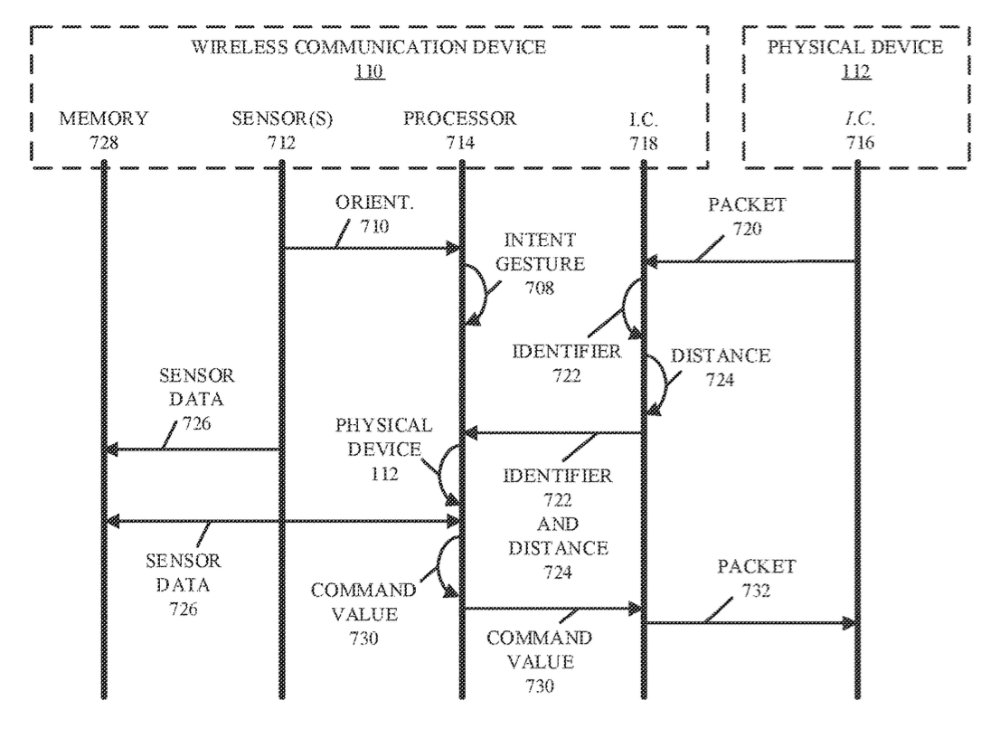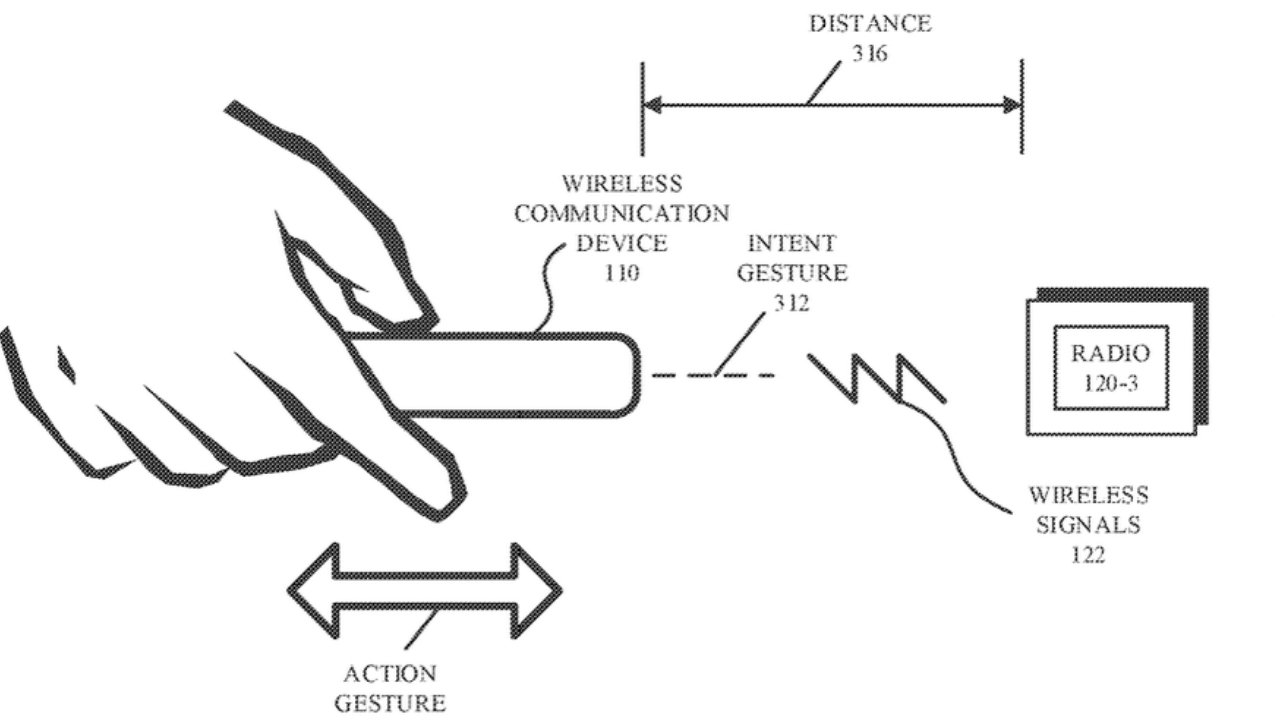Detail from the patent showing an iPhone (or “wireless communications device”) controlling other devices — image credit: Apple
You shouldn’t have to touch devices or tap on apps to control them, says a new Apple patent, you should be able to just wave your iPhone and let it figure out what you want.
Sometimes you can see a clear connection between different Apple patents, and this may be one of them. For Apple was recently granted a patent for what appears to be a remote control for the expected Home Hub — and now it’s gone further.
In a newly-granted patent called “Controlling Electronic Devices Based On Wireless Ranging,” Apple expands its idea to remotely controlling anything from real-life physical devices, to virtual ones. Right now you can control a TV set from your iPhone or unlock a car, but this new patent wants one device that controls everything, and figures out for itself what you want.
Apple claims that the way we have to physically use devices today can result in “frustrating user interactions, which can degrade the user experience.”
Patents will always make out that they are solving a problem that really, really needs solving, and maybe they always exaggerate the issues a bit. In this case, after it says don’t touch anything, the patent goes on to describe something you would have to touch.
It means an iPhone, or maybe an iPad, but throughout the patent Apple insists on calling it just “a wireless communication device.” Nonetheless, it’s a device, you hold it, and the patent suggests you wave it at things.
Patents do also always focus on how something will work rather than why you’d want it to. In this case, the bulk of the 22 pages, 4 diagrams, and 3 illustrations, are concentrated on how the wireless device can determine and convey intention.
In a flowchart diagram, Apple says the first step is for the iPhone — sorry, a wireless communication device — to notice the user wants to do something. Then it’s a question of right, which device are they thinking about?
The intention appears to be that you could vaguely wave your iPhone around, and it should be able to determine that you wanted to change TV channels, or boil a kettle, or start a game on your iPad. There isn’t a great deal about how this would be done, but proximity to the device is one factor, so whatever you’re nearest may react.
After that, there is of course a lot about privacy and security, making sure that the user is trying to control a device they actually own. Then, finally, the user’s intention is sent to this other device, which may turn on, or activate some particular feature.
As a consequence of the security checking, the validation of the user and his or her device, this is also a way that someone could skip biometric checking. “For example,” says the patent, “a user may no longer need to open or unlock the wireless communication device (e.g., by providing a passcode or a biometric identifier, such as a fingerprint) in order control the object.”

Excerpt from the patent discussing security and distance details regarding remote control of devices
“Similarly, by facilitating control of the object from a distance, this user-interface technique may eliminate the need for a user to be in physical contact with a user interface on or associated with the object,” continues Apple. “Consequently, the user-interface technique may improve the user experience when using the wireless communication device, and thus may increase customer satisfaction and retention.”
In other words, just as an Apple Watch can now unlock an iPhone, or an iPhone can unlock a Mac, so this wireless communication device would be able to do the same with anything. And apparently without you having to schlep over to the actual device.
It’s easy to imagine how an iPhone could be made into a TV remote control using this system — although there already is such a feature. In today’s iPhones, a TV set can be controlled via Control Center, if the set has an Apple TV 4K connected.
But TV functions such as volume are not universally controllable by the Apple TV 4K, and this patent’s technology might change that. Today you also have to select which Apple TV 4K you want to control if you have more than one, and that laborious burden could disappear.
Or this could still be an overhang from Apple Car research. Today you can use Apple Car Key, on supported vehicles to unlock and even start your car.
But maybe being able to point your iPhone at your Apple Car could have done more. Maybe it could have unlocked the car, started it, made it pull out of its parking space, drive up to you and open the boot, ready for your luggage.
We may never know what this patented technology could have done with an Apple Car. But together with the Home Hub remote patent, Apple is clearly set on giving us a lazier lifestyle.





